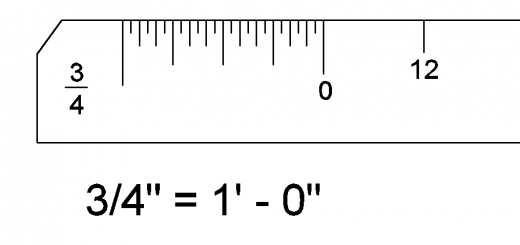Basic Trig – Sine and Inverse Sine
If you have never had a trig class, you can do some pretty useful things with just a few trig functions. Bob Welds discusses the sine of an angle and how to use it. He also tells how to find an angle from two known sides.
Video Transcript:
Hi I’m Bob Welds and this is a first look a trigonometry.
Today we are going to pick up where the Pythagorean theorem left off. If you don’t know how the Pythagorean theorem works then you probably want to go learn about that first. Also, we’ll use a little bit of algebra but i don’t think it will be a problem for you if you already know some basic algebra. To keep it simple, we’re only going to talk about a thing called the sine of an angle today. Later we’ll see other trig functions. But really, if you understand how the sine works, you’ll get the others pretty easily.
Ok. Let’s look at this right triangle. You see that it has a 30 degree angle in one corner. The side opposite of the 30 degree angle is 1 meter long, and the hypotenuse is 2 meters long. (remember that the hypotenuse is the longest side of a right triangle).
let’s compare the opposite side to the hypotenuse by dividing one by two and see what we get….1 divided by two equals .5 — a half. um. so .. that was easy. What’s the big deal? The deal is that we just found the “sine” of thirty degrees. The sine of thirty degrees is one half. we write it like this:
Here, let’s do it again. this right triangle has a height of 4 meters and a hypotenuse of eight meters. The sine of 30 deg is four divided by eight. 4 divided by eight reduces to one half, again, the sine of thirty degrees is one half, or point five. You see it doesn’t matter how big the triangle is; 30 degrees always has a sine of point five. Any 30 degree right triangle has a hypotenuse that is exactly twice as long as the opposite side. Here, you can google it…type sin 30 degrees and see what you get. be sure to type degrees or you’ll get something else.
The sine of an angle tells us the answer to the division problem we get when we put the opposite side (that is, the side across from the angle) over the hypotenuse. So the sine of the angle is “ratio” of the opposite side to the hypotenuse. the opposite over the hypotenuse. In this case, we put one over two and see that it is one half or point five.
You might be asking what good it is to know that ratio is since we already know how to divide one by two or four by eight… well let’s take a closer look. Here is another triangle, but with the same 30 degree angle in the corner. This time, we know the length of the hypotenuse and angle, but we don’t know the opposite side. Look what we could do if we knew the sine of the angle…instead of saying “sine of 30 degrees” we could say point five. Because .5 is the sine of thirty degrees. ….and instead of saying hypotenuse, we could say fourteen, because that’s how long this hypotenuse is. Now instead of using that silly question mark, we could call the length of the opposite side: “a”. And voila! we have an algebra problem instead of a trigonometry problem.
Here is how we could solve the algebra part….multiply both sides by 14… on the left, we see 14 times .5 equals seven. and on the right side .the 14’s cancel each other out…and look! A equals seven. That is something we could not have found if we didn’t know this little bit of trigonometry.
Lets see how useful the sine of an angle can be. We know the sine of thirty is, but with our calculator we can find the sine of ANY angle. Lets try to find the length of the hypotenuse of this triangle. The angle is 25 degrees and the side opposite of the angle is 1.69 meters long. First write down what we know…The sine of 25 degrees is equal to the opposite side–1.690 over the Hypotenuse. Now, we need the sine of 25 degrees…This time, I’ll use my calculator instead of google. First, we’ll turn it to scientific mode…..then I’ll be sure it knows to use degrees….now I’ll type 25 and hit the sin button. Different calculators might have you hit the sine key first, so check your answers to be sure you are doing what your calculator expects….0.422 618 261 and it keeps going. We only need the first few decimal places of that. So instead of saying “sine of 25 degrees” we will say 0.4226. Here, I rewrite our equation.
Now it’s an algebra problem. We need to isolate thy hypotenuse to see what it’s value is. I’m going to call it “C” to keep things neat and clean. I’ll multiply both sides by c….the c’s cancel out on the right…..now i’ll divide both sides by .4226. this leaves C on the left and a little division problem on the right. we use our calculator to type 1.690 divide by .4226 and we get something just a smidgen over 3.999 — a number very close to four meters.
Now we’ve seen that we can use the sine of an angle to find the sides of the triangle, and you can use the opposite side and the hypotenuse to find the sine of the angle. What if you knew the sine of an angle, not the angle itself? There’s a trick for that. Let me show you. Here we have another right triangle. The side opposite of our angle is 2.5 meters long, and the hypotenuse is 3.889 inches long. You may be able to see right away that we could find the sine of the angle like we did a few minutes ago. here, remember? You see we just put 2.5 over 3.889. Since a fraction is just a division problem, we’ll divide 2.5 by 3.889. That gives us .64283. So just like before, we know what the sign of the angle is. Only now we don’t know what the angle itself is. To find the angle when we know the sine of the angle, we just run the sine function in reverse. That’s called taking the ARC Sine or the INVERSE SINE. You will see it on your calculator as a sine with a -1 exponent, or you may see it spelled out as “A”sin or “arc sine” or even inverse sine. A lot of the time it’s the same button as the sine button, but you push another button to enable this feature. I’ll do it with this little calculator so you can see. I’ll type .64284 and push this up arrow button. You’ll see that my sine key turned into an inverse sine key.
Now when i press the inverse sine button i get an angle! Isn’t that teh cats pajamas? My angle is just a tiny bit more than forty degrees. Ill round it off to the nearest tenth of a degree. Here’s the original problem you can remember what we were solving. We knew the side opposite of the angle was 2.5 meters long, and we knew the hypotenuse was 3.889 meters long. We wanted to know the angle. First we found the sine of the angle, opposite over hypotenuse (2.5 over 3.889). We divided and found the sine of the angle was .64283. Then we used our new trick, the inverse sine to find teh angle was very close to forty degrees. I just think that’s great. That’s going to be very useful.
Ok, let’s work some problems. Im going to give you a problem where you find the missing opposite side first. When you see sparky’s paws, Pause teh video and try to fill in the blanks in the equation. You don’t need to solve it yet, just fill the blanks in with what you see on the diagram….[pause]. Ok, here are the blanks filled in. The sine of 30 degrees is equal to “a” over 15. “a” is the opposite side, and 15 is the hypotenuse. teh sine of an angle is the opposite over the hypotenuse. Now lets see if we can turn the trig problem into an ordinary algebra problem. Let’s see instead of saying sine of thirty degrees, what could we say? use a calculator to find the sine of 30 degrees, even if you know what it is. This way you can be sure your calculator is set up correctly.
I’ll pause while you calculate. ok. i know you probably remembered that the sine of thirty degrees was .5, but hopefully you tried it on your calculator. It is really important that you know how to get the sine of an angle. Now we just have a little algebra problem on our hands. See if you can solve for “a.” a is equal to 7.5. If you were able to solve it by looking at it, let me encourage you to go through the algebra steps to get good at them. Here, we multiply both sides by 15 to get rid of that fraction…. Then we see that 15*.5 is equal to 7.5. that’s our answer.
Let’s do one more. Let’s do one where we find the angle by using the opposite side and the hypotenuse…. let’s remember that if we know the opposite side and the hypotenuse, we can find the SINE of the angle. Let’s do that first. Pause the video and see if you can fill in the blanks. Then find the sine of the unknown angle by dividing. That’s right, 1 on top, 4.810 on the bottom. That means the sine of this angle is .2079 . Now for the second part, lets use the arc sine to find what the angle is….remember we know the sine is .2079 Olk, pause the video and be sure you know how to find the angle using the sine of the angle. Fill in the blanks and do the calculation on your calculator. OK, I got an answer that was ridiculously close to 12. I’m going to round it off to the nearest tenth of a degree.
Well that’s our first look at trigonometry. I hope you can see how useful it is to find angle from those lengths and lengths from the angles. There is a LOT more to cover, but if you understand how the sine and inverse sine work you are on you way to using some very useful tools. I’m bob welds, and these are weldnotes!




I’ve watched four of the video’s and they answered the questions I had. Easy listening Thank you.